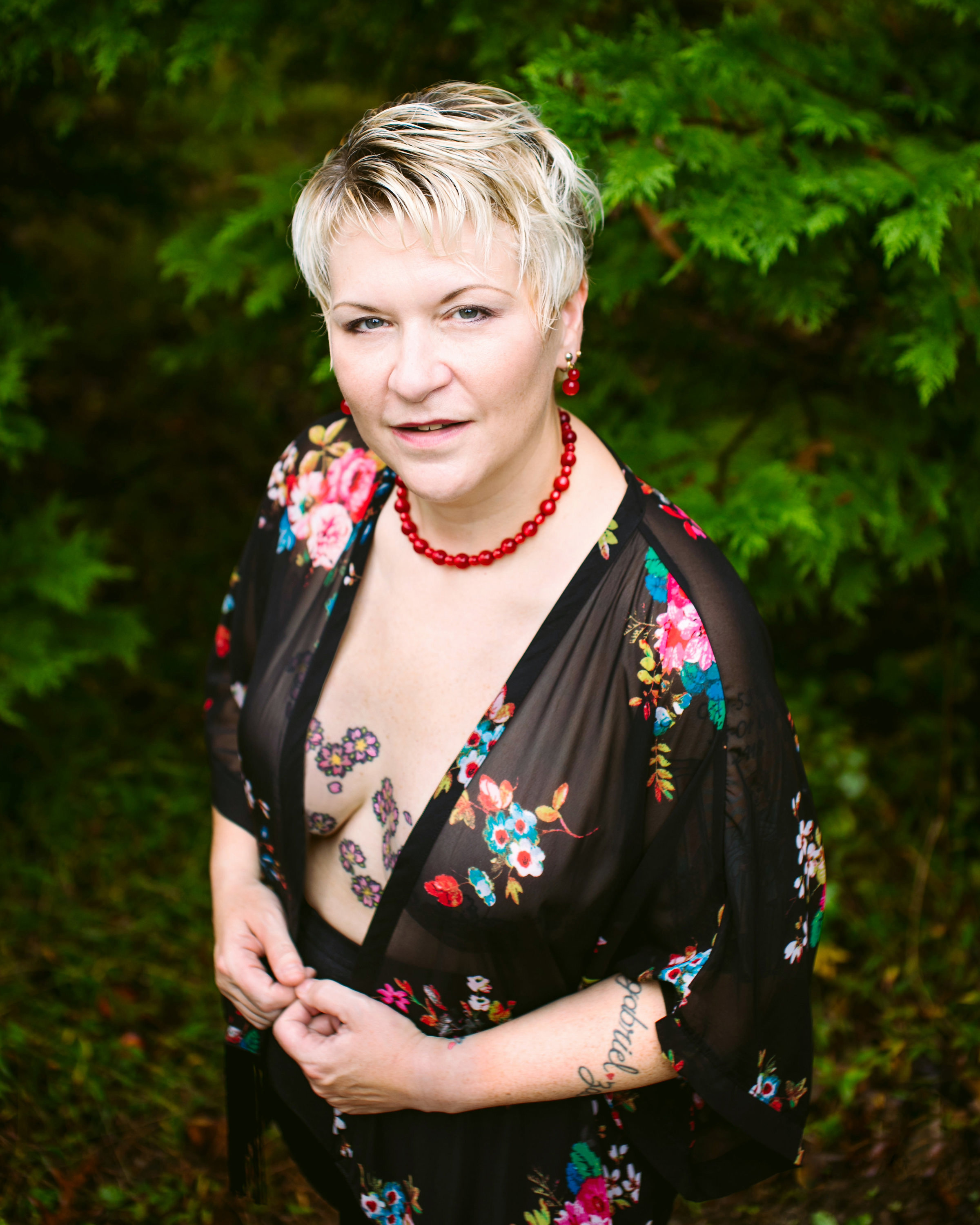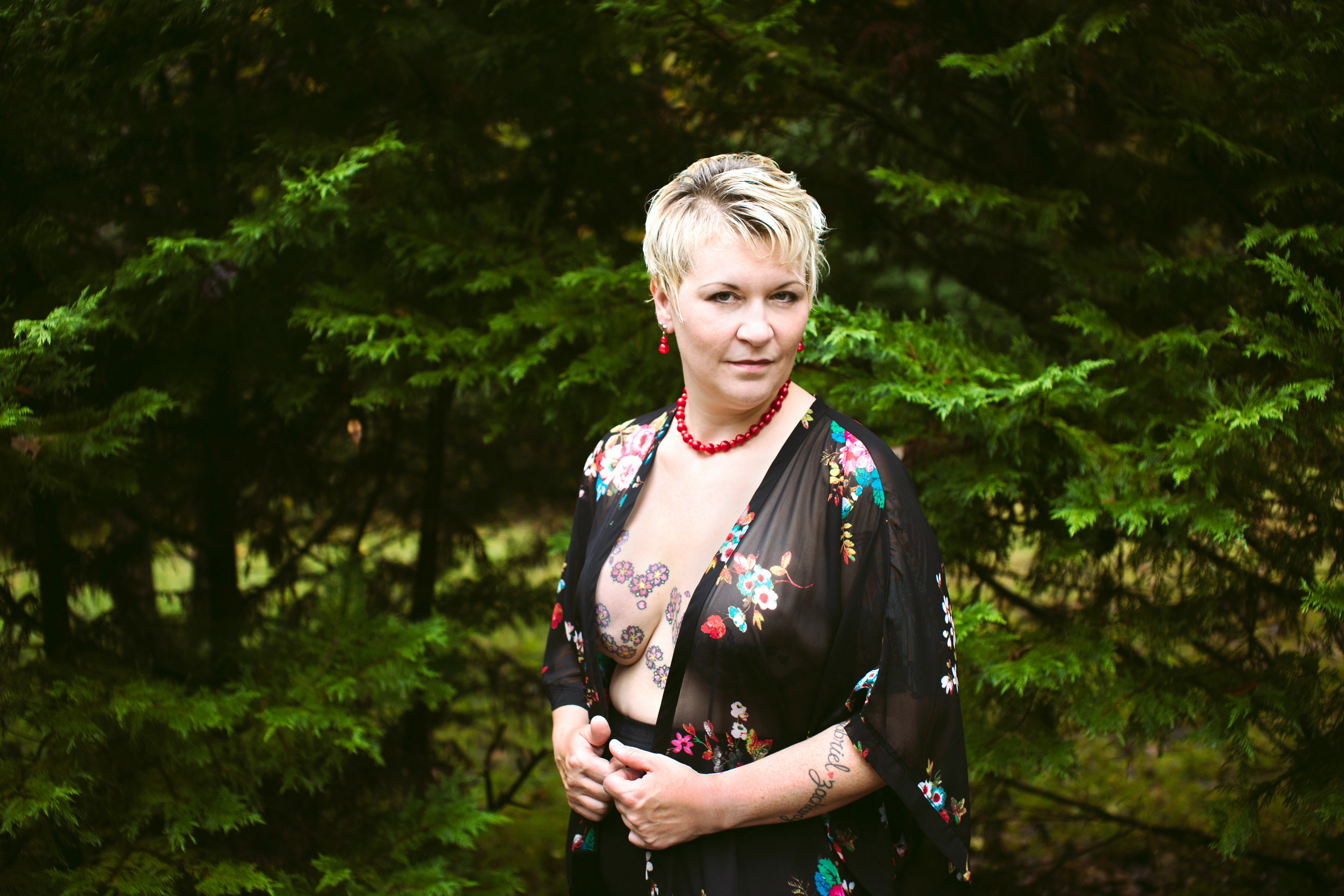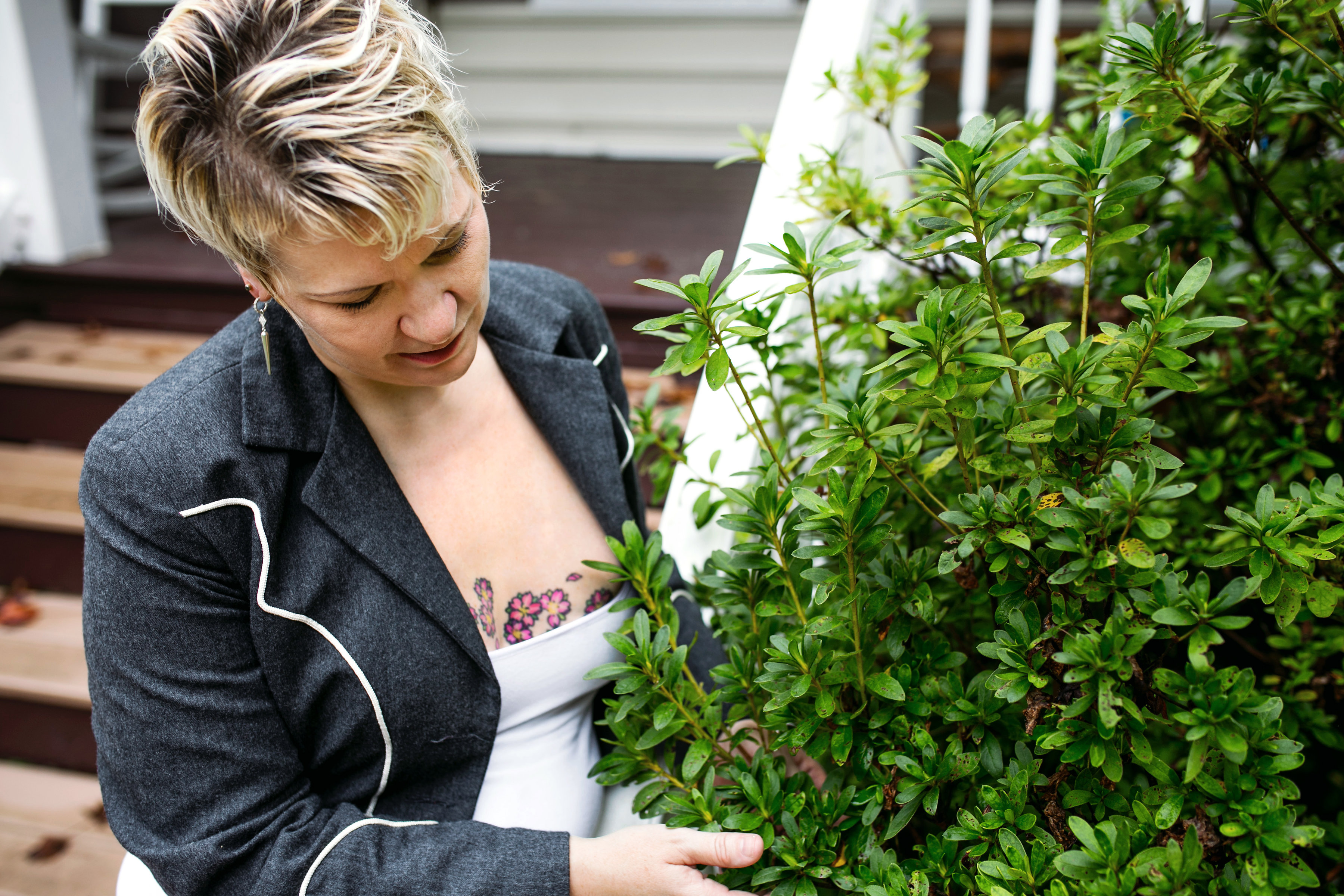
On Breast Cancer Awareness and the Rise of Floral Mastectomy Tattoos
It’s no secret that tattoos– and botanical tattoos specifically— are on the rise. But one area where botanical tattoos are having a particularly meaningful impact is among breast cancer survivors, who are using natural and floral motifs to bring healing to their bodies.
Tattoos as a form of healing and medicine is not a new practice by any means. As Margot Mifflin, author of [easyazon_link identifier=”1576876136″ locale=”US” tag=”gardcoll03-20″]Bodies of Subversion: A Secret History of Women and Tattoo[/easyazon_link], explains to GC, “Otzi, the 5,000 year-old mummy found in the Italian Alps, bears tattoos that correspond to acupuncture points. In ancient Egypt they may have been used to promote fertility. Today they’re more symbolically therapeutic– some people get them to help them overcome emotional pain or difficult transitions. Some transgender people have gotten them to mark their transition into a new identity. Breast cancer survivors have gotten them to write over the scars of their previously sick bodies to replace them with something life-affirming, which helps them move on.”
The interest in floral tattoos specifically is nothing new, either. According to Mifflin, “Indigenous people all over the world have worn [tattoos] for thousands of years. But they first became fashionable for a subculture of white western women in the late 19th century… Western women have always been drawn to floral imagery as a way of feminizing tattooing. In the late 19th century in Europe and the U.S., floral motifs echoed decorative patterns in other kinds of design from fabric to jewelry.”
The renewed popularity of floral tattoos in the 21st century is little surprise to anyone who has been following the rise of nature-based wellness and the celebration of botanics as a more holistic path of healing in the past decade. Combined with new curiousity around witchcraft, crystals, and other alternative modalities of healing, the logical extension of tattoos is to see them as a having more than just an aesthetic value. For those who undergo mastectomies, botanic tattoos often offer a symbolic, evocative alternative to the conventional tattooing of the areolae on the reconstructed breasts.
Specializing in post-mastectomy tattoos, Amy Black is the founder of The Pink Ink Fund, a non-profit which helps breast cancer survivors fund post-mastectomy tattoos. In 2015, Black’s images of her post-mastectomy work were controversially taken down from Instagram for being “sexually suggestive”. Talking to GC, Black notes that her own work with post-mastectomy clients has seen an uptick in the past five years of “flowers– roses, cherry blossoms, orchids, lilies. I’ve also seen (and tattooed with my own mastectomy tattoo clients) butterflies, and have seen the occasional bird, hummingbird, several fantasy birds (phoenixes), bees, dragonflies.”

One of Black’s clients, Dawn Carter, opted for a tattoo of floating cherry blossoms post-mastectomy. Carter is no stranger to tattoos (she has two other tattoos as a reference to her breast cancer diagnosis and several others nodding to her children and religion) and the decision to get non-traditional post-mastectomy tattoos was a relatively straightforward one.
“My surgeries left me with two vertical scars, and my reconstruction was done by expanding my skin and inserting silicone implants,” Carter explains to GC. “Although my plastic surgeon did an excellent job, I was left with asymmetry thanks to my left side being subjected to much more invasive testing and manipulation than my right side… I knew that the ‘traditional’ nipple tattoos were just not ‘me.’ After I had pretty much healed and before tattooing began, it was very emotionally painful to look at those scars and I knew I needed something to draw my attention away from those reminders of what I had lost, and remind me of what I had gained.
“In the end, I chose the cherry blossoms because of their dual meanings in Chinese and Japanese culture: in the Chinese culture, they represent power and strength, and in the Japanese, they represent the fleeting nature of life, since the blossoms themselves are ephemeral and bloom only a short time before giving way to the next stage of the tree’s life,” Carter continues. “To be able to accept the necessity of their fleeting nature rather than perpetually mourn their loss is a sign of power and strength.”
Together with her other tattoos, Carter sees her ink as more than just the sum of their parts and colors.
“My tattoos form a tapestry representing the things that have shaped who I am as a person throughout my life: my children, my survivorship, and the continuation of my recovery after cancer through athletics,” Carter explains. “I describe myself as ‘loudly spiritual and quietly religious.’ My many bold tattoos represent various aspects of my life’s journey.”
Yet Carter sees her tattoos as extending beyond herself and her own life.
“It warms me to the depths of my heart and soul to see more women (and men) being open with allowing others to see photos of their post-mastectomy tattoos– and happy that we have social media and other outlets to allow widespread access to them,” Carter says in closing. “It initiates a spiritual connection that may simply be an appreciation for the unique surface beauty of the art, but also a deep appreciation for the fact that the art heals as uniquely as the person who bears it on their chest and has woven it into the tapestry of their spirit.”
To learn more about The Pink Ink Fund, visit their website.
To perform your own breast cancer exam, check out these five steps.




































